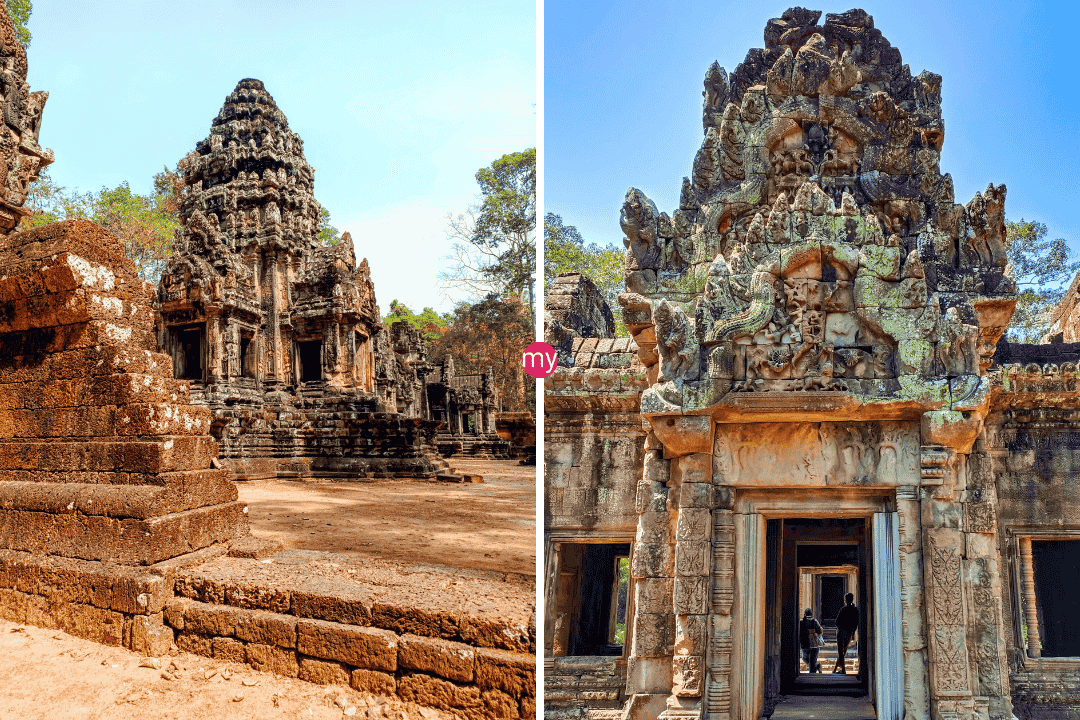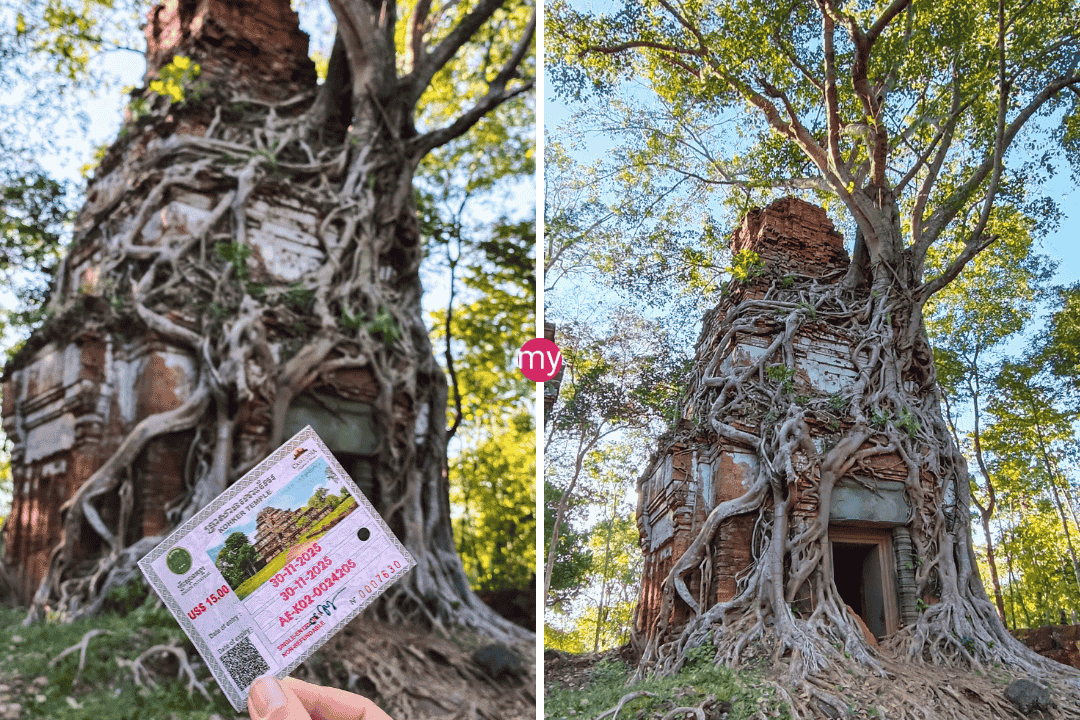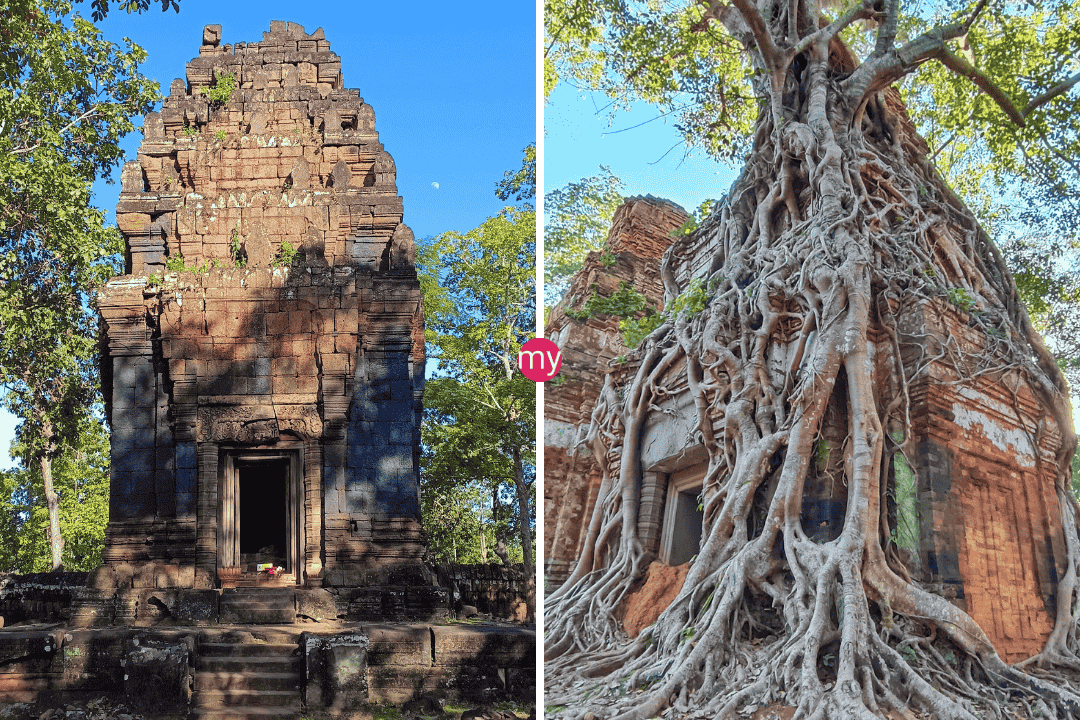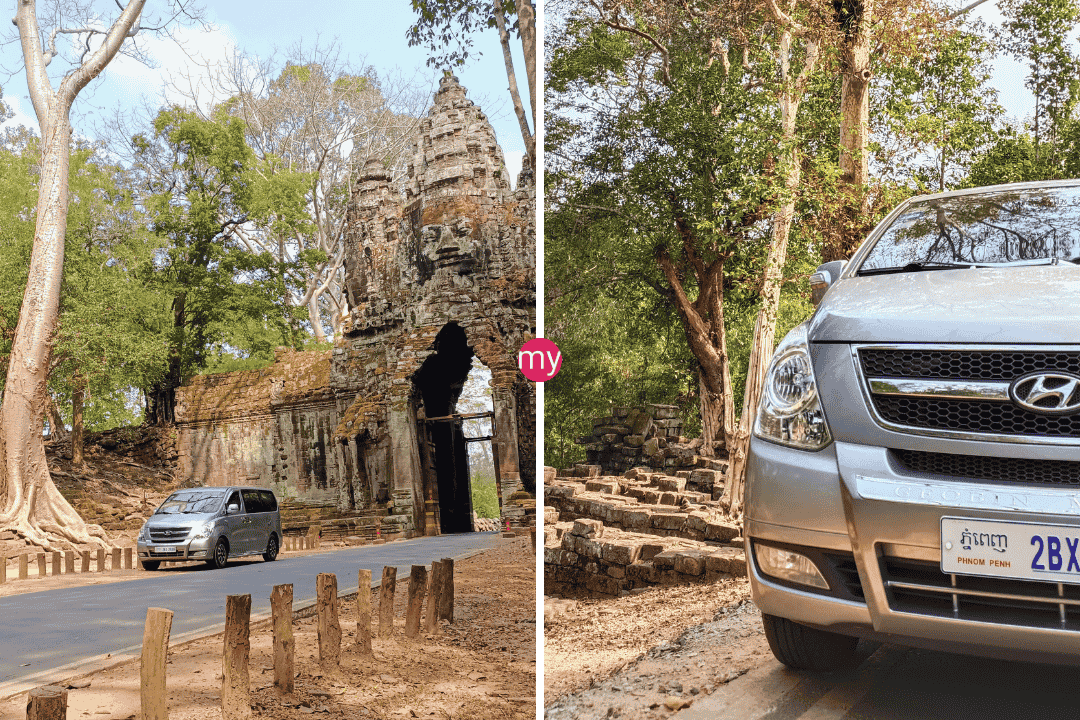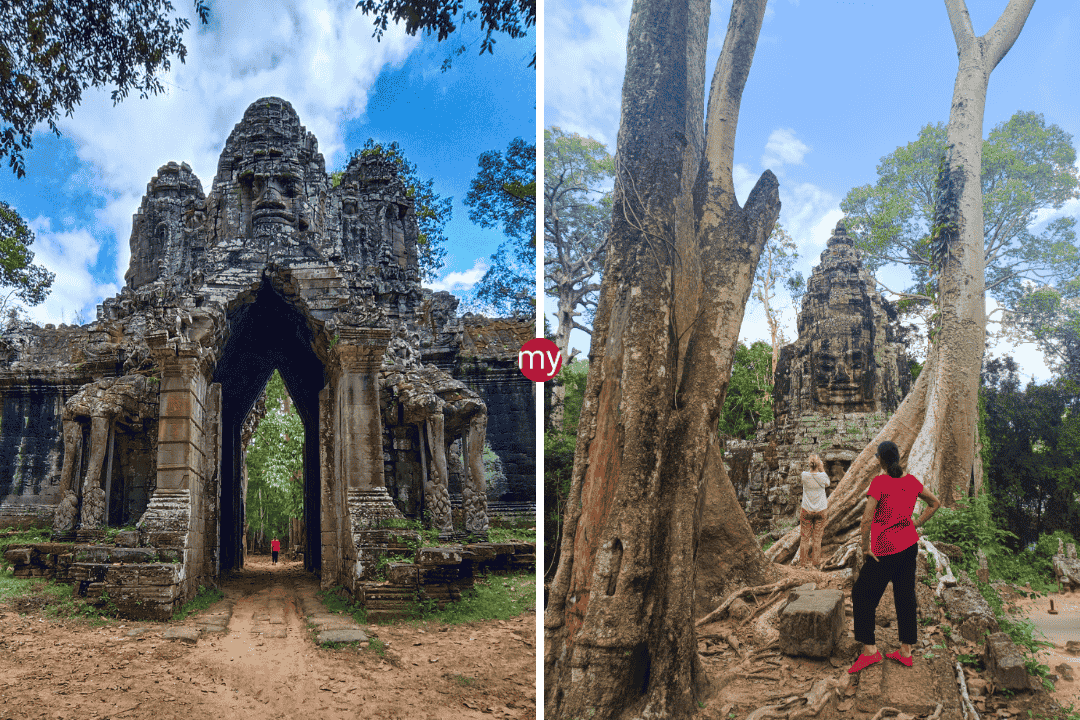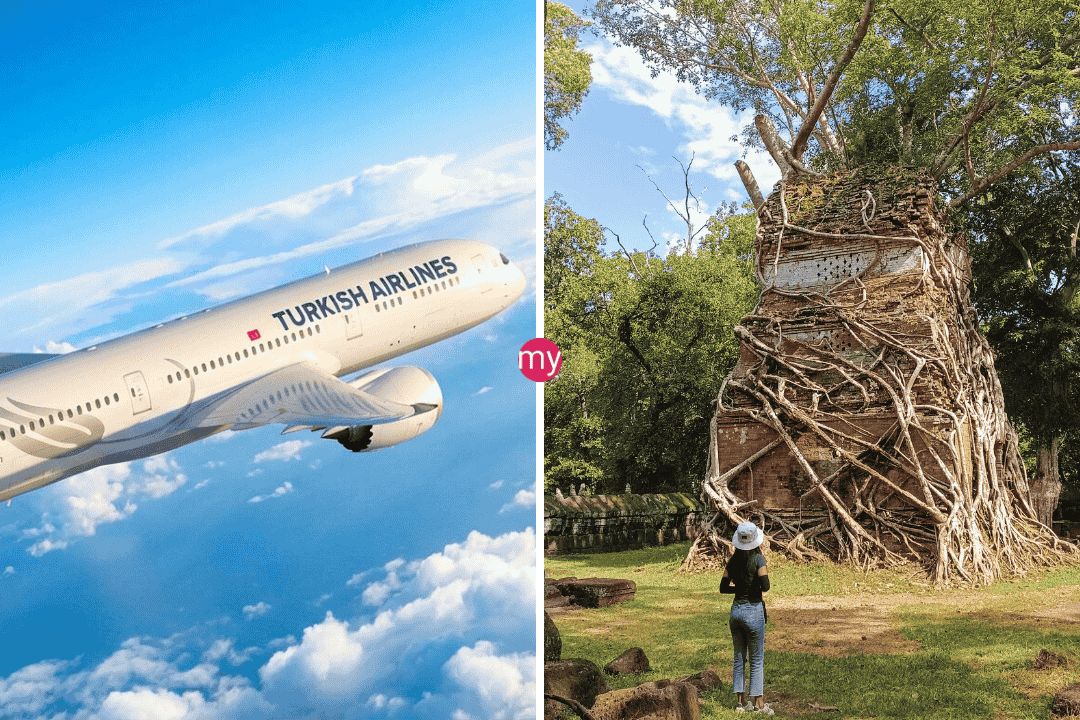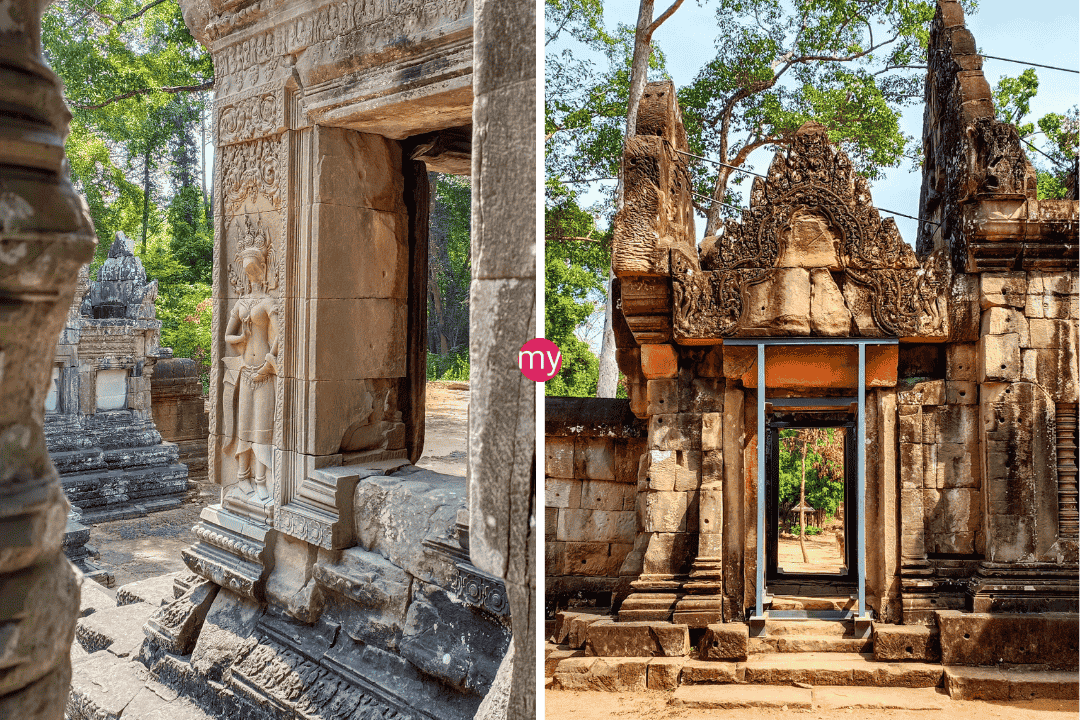Deep dives into Siem Reap local conservation projects, including how tourists can get involved!
As a traveler wanting to do good, you have the chance to help where you visit. Conservation projects in Siem Reap let you give back by protecting Cambodia’s wildlife and nature.
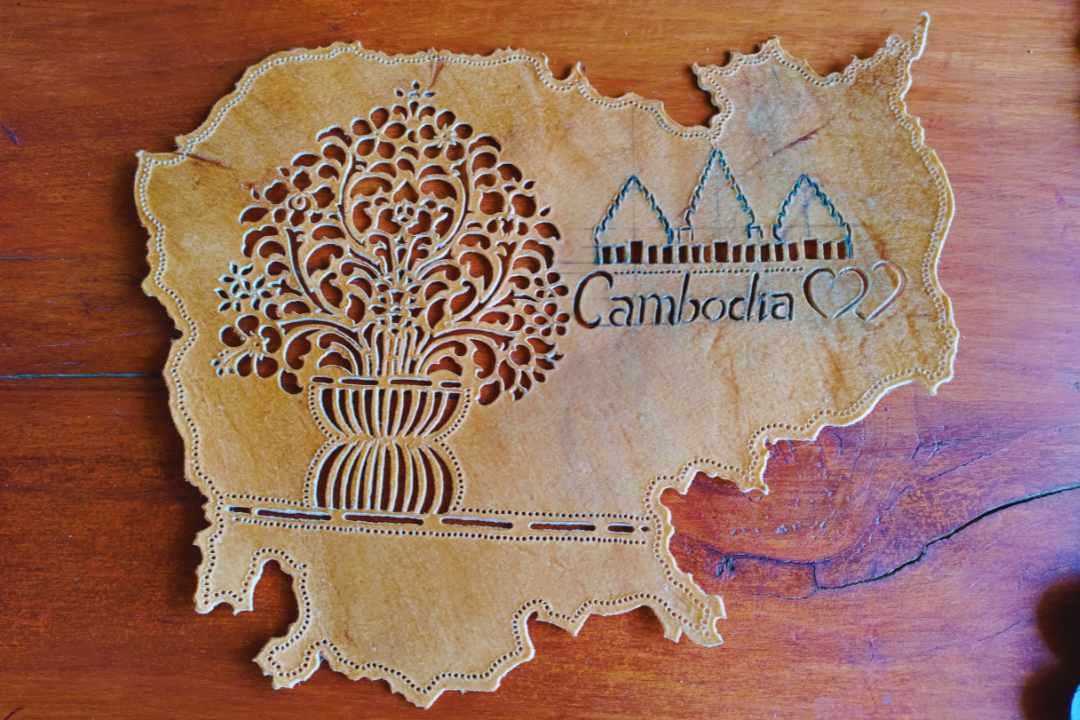
You can help by supporting companies that teach and hire at-risk young people. Buying from local artisans using fair trade is another way to aid. You can also help with demining, safe water plans, building schools, and teaching about the environment. These efforts save the area’s natural beauty.
As you explore Siem Reap’s culture, you’ll see how important it is to travel wisely. It’s about more than just being trendy; it’s a value that protects Cambodia’s history and nature. Take simple steps like choosing refillable water bottles, reusable bags, and avoiding plastic. These make a big difference. Also, try to visit eco-friendly places and join conservation efforts. This way, you enjoy the culture while being a good earth steward.
Key Takeaways
- Siem Reap offers conservation projects that allow tourists to contribute towards protecting Cambodia’s diverse wildlife and ecosystems.
- Supporting social enterprises and fair trade practices empowers at-risk youth and local artisans.
- Visitors can contribute to humanitarian demining efforts, safe water initiatives, community schools, and environmental education programs.
- Responsible travel in Siem Reap is a mindset deeply rooted in preserving Cambodia’s cultural heritage and natural wonders.
- Conscious choices like using refillable water bottles, reusable bags, and saying no to single-use plastics reduce environmental impact.
Satcha: Preserving Traditional Crafts and Livelihoods
In the heart of Siem Reap lies Satcha, an amazing social enterprise. It aims to keep local artisans’ work alive and their skills strong. Satcha uses a special way to help out. They train people in craft skills over three years. This helps build a new group of talented craftspeople.
Unique Business Model Incubating Craft People Through 3-Year Training
Satcha does something really different to help artists. They train folks from tough backgrounds. These trainees learn many traditional crafts. They learn weaving, woodcarving, lacquerware, and stone carving. This ensures these important crafts will go on for years.
Commitment to Buying Products Monthly from Trainees
What makes Satcha special is their promise to buy from their own trainees every month. This promise gives the trainees a steady pay. It also makes them feel proud of what they do. As a visitor to participating countries, I can help. I can buy from Satcha. This supports the arts of Cambodia.
Satcha’s mission is close to the small-scale finance to local community organizations. It helps artisans stand on their own two feet, saving their cultural works for all time.
When I visit places like the Made in Cambodia Market, I see the beauty of real Cambodian crafts. Each item shows off the skills taught by Satcha. Buying these is my way to help the local economy. It also supports keeping biodiversity management and sustainable livelihood activities going in Siem Reap.
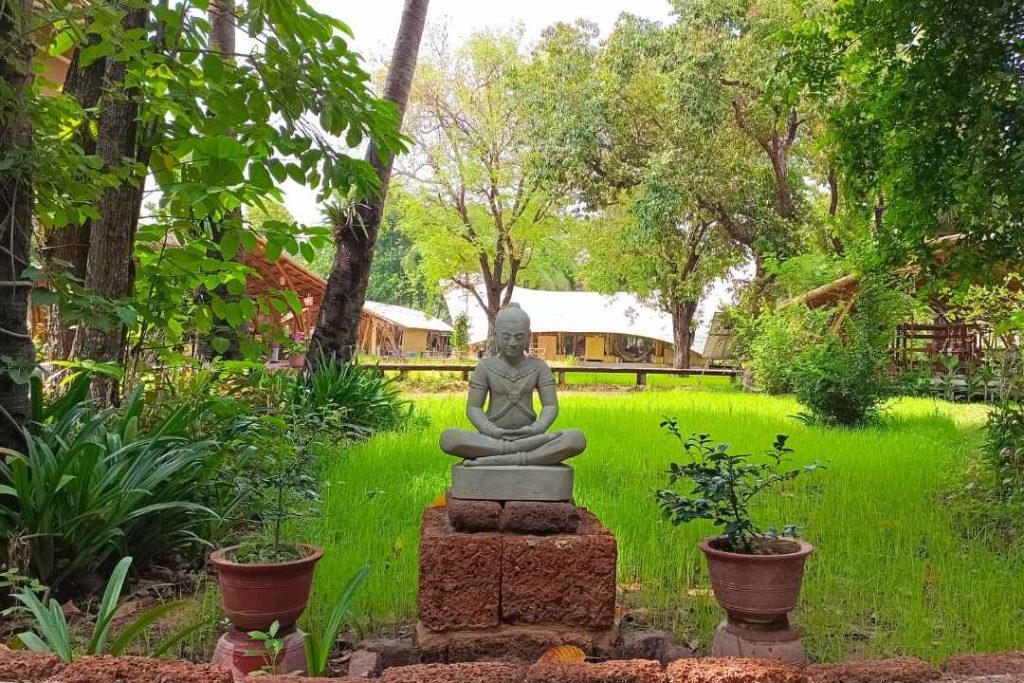
Conservation Projects Tourists Can Support in Siem Reap
Siem Reap has lots of chances for tourists to help with conservation. They can support fair trade which helps local artisans. They can also join in to help protect the environment. This way, they enjoy the area’s culture and keep its nature beautiful.
Fair Trade Village and Made in Cambodia Market
The Fair Trade Village and Made in Cambodia Market are lively places. Here, visitors can buy real, local crafts and help local businesses. By choosing fair trade products, tourists support local lives and keep Cambodian traditions alive.
Apopo Visitor Center: Humanitarian Demining with Hero Rats
The Apopo Visitor Center is special because it shows how HeroRATS work. They are rats trained to find landmines and TB. By visiting this center and paying a small fee, tourists help with demining. They also support making the community better and keeping the environment safe.
HUSK Cambodia: Safe Water, Schools, and Uniform Funding
HUSK Cambodia does amazing work. It shows tours that highlight its goals, like bringing safe water. It also helps community schools and provides school uniforms. By going on these Siem Reap tours, travelers support the local community and help nature in Cambodia.
Siem Reap is full of ways tourists can help. They can support fair trade, help with demining, or fund education and water projects. By being responsible, visitors can do a lot of good. They also get to know the culture of the area better.
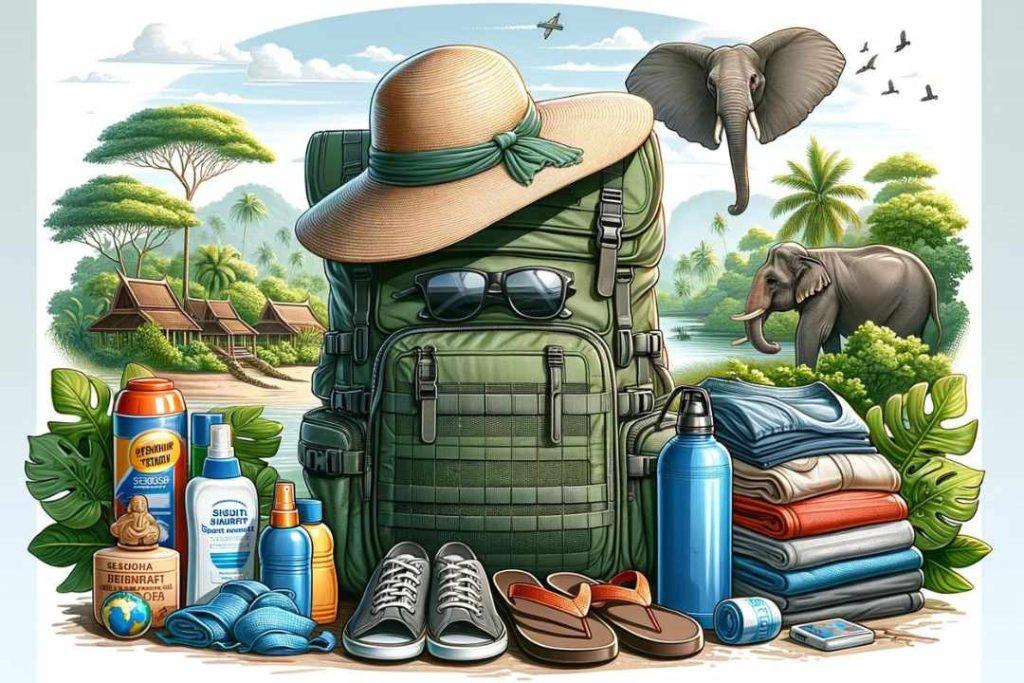
Kulen Elephant Forest: An Enchanting Sanctuary for Cambodia’s Gentle Giants
The Kulen Elephant Forest is a 1100-acre protected forest in the foothills of Kulen Mountain in Cambodia, inhabited by former captive elephants from the Angkor temples.
The elephants, who gave rides to visitors for over 20 years, now roam free in their natural habitat.The forest’s mission is to provide a safe and natural environment for the elephants to live in, while also educating visitors about elephant conservation.
The facilities, including the main lodge and furniture, were designed and built with sustainability in mind, using recycled and repurposed materials.Visitors can experience the daily life of the elephants by joining morning or afternoon tours.
The tours include observing the elephants in their natural surroundings, walking with them in the forest, and witnessing their behaviors and relationships. Meals are served with vegetarian options.
The Kulen Elephant Forest is part of the Bos Thom Village Community and works closely with the local community to protect the forest from threats such as non-sustainable exploitation and encroachment.
The forest is home to various species of birds, small mammals, and insects.The organization also conducts projects to protect the forest, such as forestry inventory and patrols, and has translated a “Mahout Care Manual” into Khmer to serve as a resource for elephant care.
Visitors can contribute to the cause by making donations, sponsoring an elephant, or sharing their experience on social media.
For the MySiemReaptours.com audience
How can I sponsor an elephant at the Kulen Elephant Forest from home?
- To sponsor an elephant at the Kulen Elephant Forest, you can follow these steps:Visit the Kulen Elephant Forest Website: Go to the official website of the Kulen Elephant Forest Sanctuary at www.kulenforest.asia.
- Navigate to the Contribute Page: Click on the “Contribute” tab on the top menu bar to access the donation and sponsorship options.
- Choose the Sponsorship Option: Look for the “Sponsor an Elephant” section on the contribute page. This will provide you with detailed information about the sponsorship program and the benefits that come with it.
- Make Your Donation: Follow the instructions to make a donation, which will be used to support the care and well-being of the elephants at the sanctuary. You can also book a visit to the sanctuary through this page.
- Confirm Your Donation: After making your donation, you will receive a confirmation receipt, which you can use to track your contribution and stay updated on the progress of your sponsored elephant.
By sponsoring an elephant, you will be supporting the conservation efforts and providing a safe haven for these magnificent animals.
Exploring Siem Reap’s Eco-Friendly Accommodations
Being an eco-conscious traveler, I look for stays that promote Siem Reap sustainable tourism and responsible travel in Siem Reap. In Siem Reap, there’s a wide range of eco-friendly activities and places to stay. These places care a lot about the environment and are all about going green.
Jaya House Riverpark’s Sustainable Initiatives
Jaya House Riverpark stands out in Siem Reap. It sits by the Siem Reap River, offering peace and quiet. This place has lots of Siem Reap eco-friendly activities. They aim to use less plastic with their refill not landfill program.
Jaya House Riverpark offers a serene and sustainable retreat for travelers seeking to immerse themselves in the natural beauty of Siem Reap while contributing to local conservation efforts.
Refill Not Landfill Program and Tree Planting
Their program tells guests to fill up their reusable water bottles. This cuts the need for throwaway plastic bottles. And, they help plant trees with local groups. This is a way for visitors to join in eco-tourism projects in Angkor. They get to help the earth while staying there.
Staying at places like Jaya House Riverpark means more than just a quiet, fancy visit. It means supporting siem reap sustainable tourism. It helps keep the area’s nature and history safe for kids to see later.
Responsible Travel in Siem Reap: A Mindset for Change
Being a smart traveler in Siem Reap means more than it seems. It’s about saving Cambodia’s special places. This includes using things like refillable water bottles and not using plastic bags. These small choices add up to big benefits for the earth.
When we stay at places that care about the earth, and help with local projects, our trip gets better. We feel more a part of the culture and help protect nature. This can be everything from working at eco-tourism projects in Angkor to helping out with community-based conservation projects. It really makes us feel useful.
Responsible travel goes beyond just our own impact. It’s about feeling like we belong in the places we visit. It’s joining in with local efforts to save animals and plants. This way, our visit does good for the area too.
The Cambodia Wildlife Sanctuary is a great example. It’s a huge, 25,000-acre safe space for animals. It aims to be the first place where elephants are totally free, with no human guides. They use fancy feeding places instead. This shows the power of what we do for angkor ecological preservation.
- By making thoughtful choices, we help keep Cambodia’s beauty and history safe.
- We can do a lot, from buying things from local folks to learning about nature, to help Siem Reap sustainable tourism.
- Choosing to travel the right way means we’re changing the world for the better. We’re leaving a good mark for those who come after us.
I’m learning a lot on my travels in Siem Reap. I see how my actions matter a lot for its future. By being kind to the earth and helping to care for it, we can keep Siem Reap wonderful for everyone in the years to come.
In Highlight:
Phare, the Cambodian Circus: A Social Enterprise Empowering Youth
In the lively heart of Siem Reap, Phare, the Cambodian Circus shines. It’s a symbol of hope for Cambodian youth. This social enterprise is closely connected to Phare Ponleu Selpak. They give free education in art and academics to young people in Battambang.
Phare Ponleu Selpak Provides Free Artistic and Academic Education
Phare Ponleu Selpak helps at-risk Cambodian youth with art and academics. They learn skills to make their futures bright. This education helps them grow, boosting their confidence and goals.
Daily Performances at 8pm, Additional Shows During Peak Season
At 8pm, Phare, the Cambodian Circus, presents its graduates’ talents. The shows mix acrobatics, dance, and music with Cambodian stories. During November to March, there are also 5pm shows on Mondays, Thursdays, and Saturdays.
Support Job Opportunities for Graduates Through Attendance
Visiting these shows helps Phare, the Cambodian Circus, and its graduates. Your visit supports this project’s success. It lets young artists follow their dreams and keeps Cambodia’s culture alive.
Discovering Battambang’s Artistic Heritage
Battambang is in northwestern Cambodia. It welcomes careful visitors with its deep artistic history and community-based conservation projects. You’ll find a lively scene of traditional dance, local crafts, and modern art galleries. They invite everyone to enjoy the culture here.
Ptea Teuk Dong NGO: Volunteering Opportunities Galore
The Ptea Teuk Dong (PTD) NGO offers lots of chances to help. You can support local conservation and environmental education in Cambodia. They need help with many things, from teaching English to helping with farming or office work.
Community Wishlist for Easy Giving
Even if you’re short on time, the PTD NGO makes it easy to help local conservation. You can buy things locally or bring your own. It’s a simple way to give needed items. This helps the responsible travel spirit in Siem Reap and more.
As I explored Battambang’s artistic heritage, I was inspired by the city’s commitment to preserving its cultural roots while embracing sustainable initiatives. Supporting organizations like PTD NGO not only enriched my travel experience but also allowed me to contribute to the betterment of local communities and environmental conservation efforts.
Beyond Angkor Wat: Floating Villages and Rural Initiatives
I went past Angkor Wat and found Siem Reap’s pretty countryside. It was full of rural places and eco-tourism projects. These let visitors live like locals and keep biodiversity safe.
Tonle Sap Lake: Floating Village Tours with a Twist
Seeing the floating villages on Tonle Sap Lake was special. These families live on water. On tours with a good group, I saw their hard work and helped by picking up trash. This kept their water clean.
New Hope NGO: Community Development in Rural Areas
In the countryside, I found New Hope NGO making a big difference. They help people in many ways, like teaching and green projects. They welcome visitors to help and eat in their café. It was nice to aid their local conservation and feel Cambodia’s friendly vibe.
“Responsible travel is not just a trend; it’s a mindset deeply rooted in preserving Cambodia’s cultural heritage and natural wonders for generations to come.”
Helping these local plans made me love the area’s customs more. It also made my trip a responsible one in Siem Reap. I helped keep their nature safe and helped people live better.
Quote from a Local Expert: As Mr. Brown, our local tour guide, explains, “Exploring the Siem Reap countryside offers a unique window into the heart of Cambodia. Here, the rhythm of life moves to the timeless pulse of the fields and the villages. This tour isn’t just about seeing the sights; it’s about connecting with the soul of our community and understanding our traditions that have been passed down through generations.”
Recommended: Siem Reap floating village sunset tour
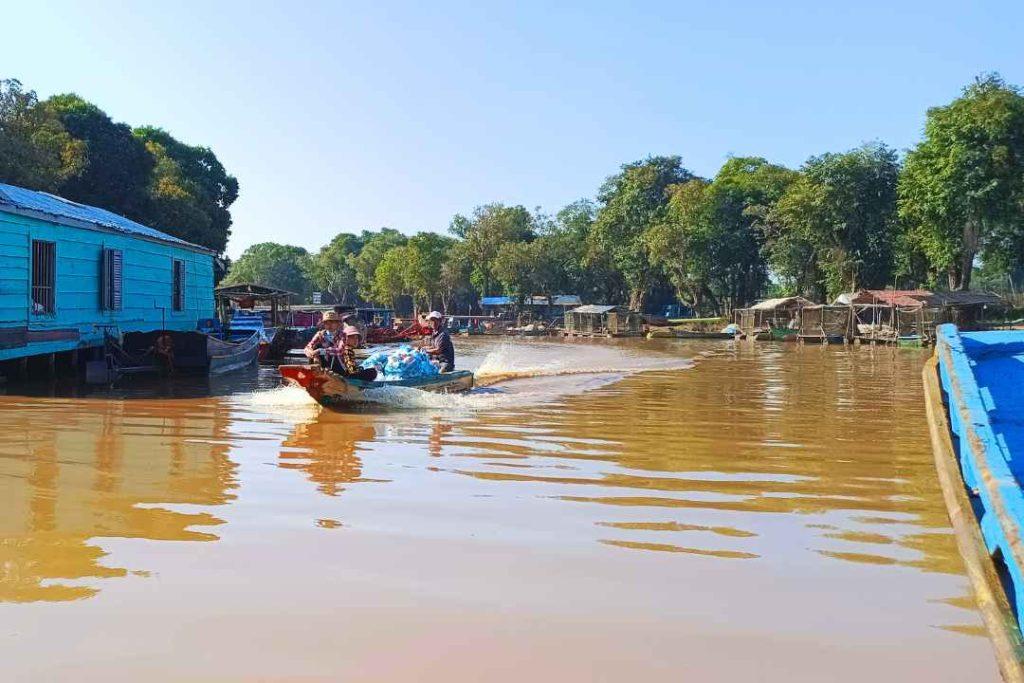
What about Phnom Penh? Dark History and Empowering Initiatives
Exploring Phnom Penh, Cambodia’s capital, fills me with deep respect. I pay tribute to the Khmer Rouge victims at the Tuol Sleng Genocide Museum and Choeung Ek Killing Fields. This helps me grasp the country’s painful history. But in this moment, I also find hope in the Cambodian people’s strength and the support they receive.
Tuol Sleng Genocide Museum and Killing Fields
The Tuol Sleng Genocide Museum was once a school, now a place of sorrow. Walking through its cells, I see heart-wrenching signs of past wrongs. At the Choeung Ek Killing Fields, I step carefully, feeling the weight of so many lost lives. It’s a reminder of the horrors faced during that time.
Daughters of Cambodia: Empowering Survivors
But through the darkness, the light of the Cambodian spirit shines bright. Organizations like Daughters of Cambodia do amazing work. They help survivors of trafficking find a new start through training and job opportunities. Supporting them means a better future for these brave women and helps safeguard Siem Reap’s environment.
My travels show me the impact of even the smallest act of kindness. Every moment of care or support matters. By being open to learning and helping in ways we can, we make a difference. We help keep Cambodia’s beauty and history alive for the next generation.
Featured
Explore more on My Siem Reap Tours
Koh Ker and Beng Mealea guided tour | Banteay Srei temple tour semi-private guided tour | Angkor Wat Sunrise shared tour | Koh Ker and Beng Mealea guided tour | Morning Siem Reap floating village tour | Afternoon Siem Reap floating village tour | Private Angkor Wat special tour | Kulen Waterfall small group guided Tour | Private Angkor Wat mix temples photo tour
